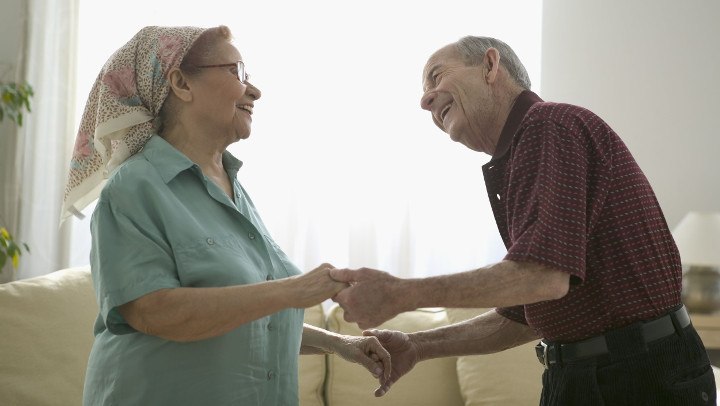You know that great feeling you get after a workout or walk around the block? It’s easier to breathe, your muscles feel re-charged and you feel calmer and more relaxed.
Well, guess what? Individuals with dementia, such as Alzheimer’s, get that same feeling. They may not be able to communicate it to you, but their bodies benefit from exercise just as yours does.
For people with memory loss, any movement is a good movement, as long as it’s within safety boundaries for the individual. According to the American College of Sports Medicine, the keys to making exercise programs successful for those with Alzheimer’s or dementia are: keep them enjoyable, be patient, and stay as consistent as possible.
Here are five types of exercises, most of which we use at our Anthem Memory Care communities, which you can do too with your loved one:
- Tai Chi and Qigong: Ancient Chinese meditative exercises are slow, rhythmic and promote more oxygen to the brain. They also promote relaxation. And, Qigong can be done from a sitting position for those who are no longer ambulatory.
- Swimming: Not for everyone, because safety can be a big issue. However, for those in the early stages of dementia, soft swimming in the shallow end of the pool can be a calming and soothing exercise, as well as heart and brain healthy.
- Dancing: Nothing wild and crazy here, but easy, rhythmic activity that gets the arms and legs moving works best. Put on some oldies that your loved one enjoys and dance with him or her. It’s a positive way to sneak in some exercise and have fun in the process. Be watchful to make sure your loved one is not getting overheated. It’s easy to get carried away and overheated, no matter how old you are.
- Walking: As long as your loved one is steady on his or her feet, walking is one of the best things you can do for circulation and muscle tone. Keep your walks short; around the house or in your backyard. Just make sure that obstacles are removed and that you are walking on relatively flat surfaces without rocks or steep inclines.
- Seated exercises: There is no reason, for those who can’t walk, not to experience the benefit of exercise. Seated exercises can help maintain muscle strength, upper body control, and pump more oxygen to the brain They are ideal for individuals in later stages of dementia. Here are some ideas to get your loved one moving while seated:
- Turning body from side to side
- Raising arms to ceiling
- Raising opposite arms and legs
- Clapping under legs
- Leg bicycling
- Move from sitting to standing (if able)
Remember, easy does it.
As with any exercise regimen, take it easy! Put a cap on the length of time your loved one is actively exerting energy. And celebrate small victories. For those who are sedentary, even a walk around the house is an accomplishment. The key is to keep it enjoyable. Physicians recommend keeping sessions to 10 minutes or less. Only increase the time if your loved one is able and clearly enjoys it.
Since 2009,
Anthem Memory Care has been a haven for loved ones who need memory and dementia care. Our experienced, professional team expands over 20 communities with more than 1,300 suites designed for memory care needs. Each community offers numerous helpful amenities and resources, creating a nurturing and supportive environment that caters to the needs of our residents. Along with compassionate and personalized
memory care, we provide services in areas of wellness, health, and safety. We invite you to explore our services or contact us today if you have any questions.
